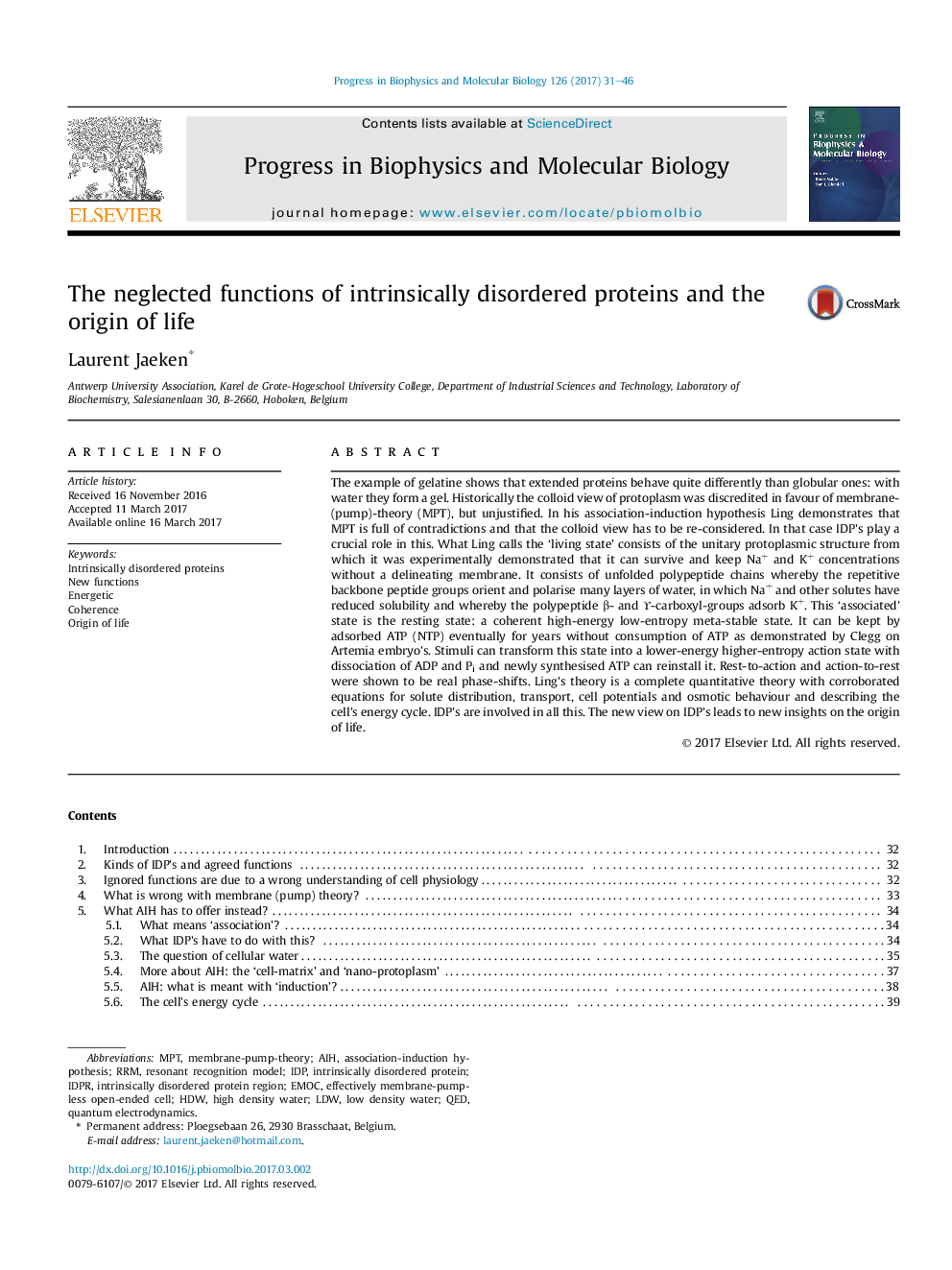| کد مقاله | کد نشریه | سال انتشار | مقاله انگلیسی | نسخه تمام متن |
|---|---|---|---|---|
| 5519866 | 1544473 | 2017 | 16 صفحه PDF | دانلود رایگان |
The example of gelatine shows that extended proteins behave quite differently than globular ones: with water they form a gel. Historically the colloid view of protoplasm was discredited in favour of membrane-(pump)-theory (MPT), but unjustified. In his association-induction hypothesis Ling demonstrates that MPT is full of contradictions and that the colloid view has to be re-considered. In that case IDP's play a crucial role in this. What Ling calls the 'living state' consists of the unitary protoplasmic structure from which it was experimentally demonstrated that it can survive and keep Na+ and K+ concentrations without a delineating membrane. It consists of unfolded polypeptide chains whereby the repetitive backbone peptide groups orient and polarise many layers of water, in which Na+ and other solutes have reduced solubility and whereby the polypeptide β- and Ï-carboxyl-groups adsorb K+. This 'associated' state is the resting state: a coherent high-energy low-entropy meta-stable state. It can be kept by adsorbed ATP (NTP) eventually for years without consumption of ATP as demonstrated by Clegg on Artemia embryo's. Stimuli can transform this state into a lower-energy higher-entropy action state with dissociation of ADP and Pi and newly synthesised ATP can reinstall it. Rest-to-action and action-to-rest were shown to be real phase-shifts. Ling's theory is a complete quantitative theory with corroborated equations for solute distribution, transport, cell potentials and osmotic behaviour and describing the cell's energy cycle. IDP's are involved in all this. The new view on IDP's leads to new insights on the origin of life.
Journal: Progress in Biophysics and Molecular Biology - Volume 126, July 2017, Pages 31-46
